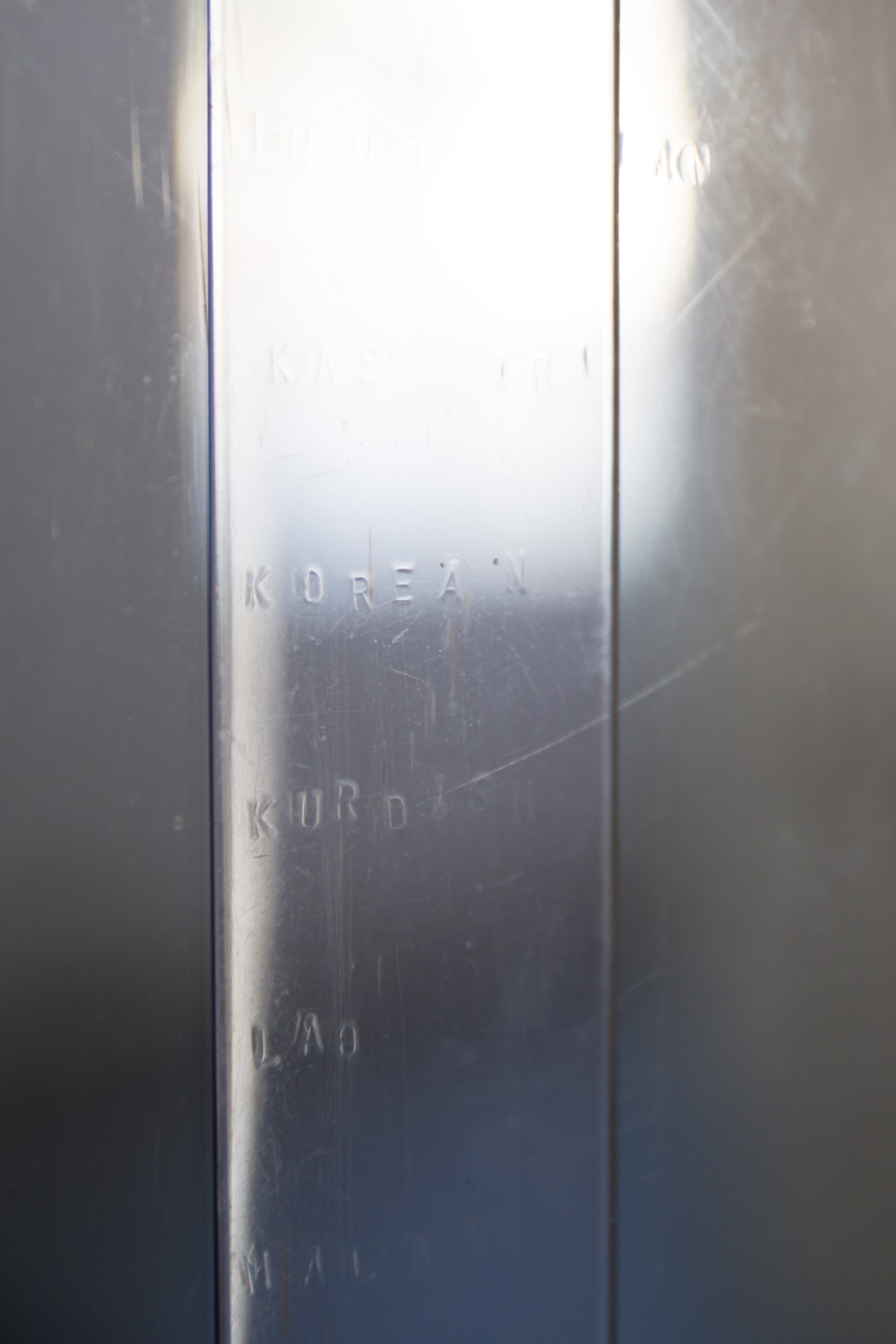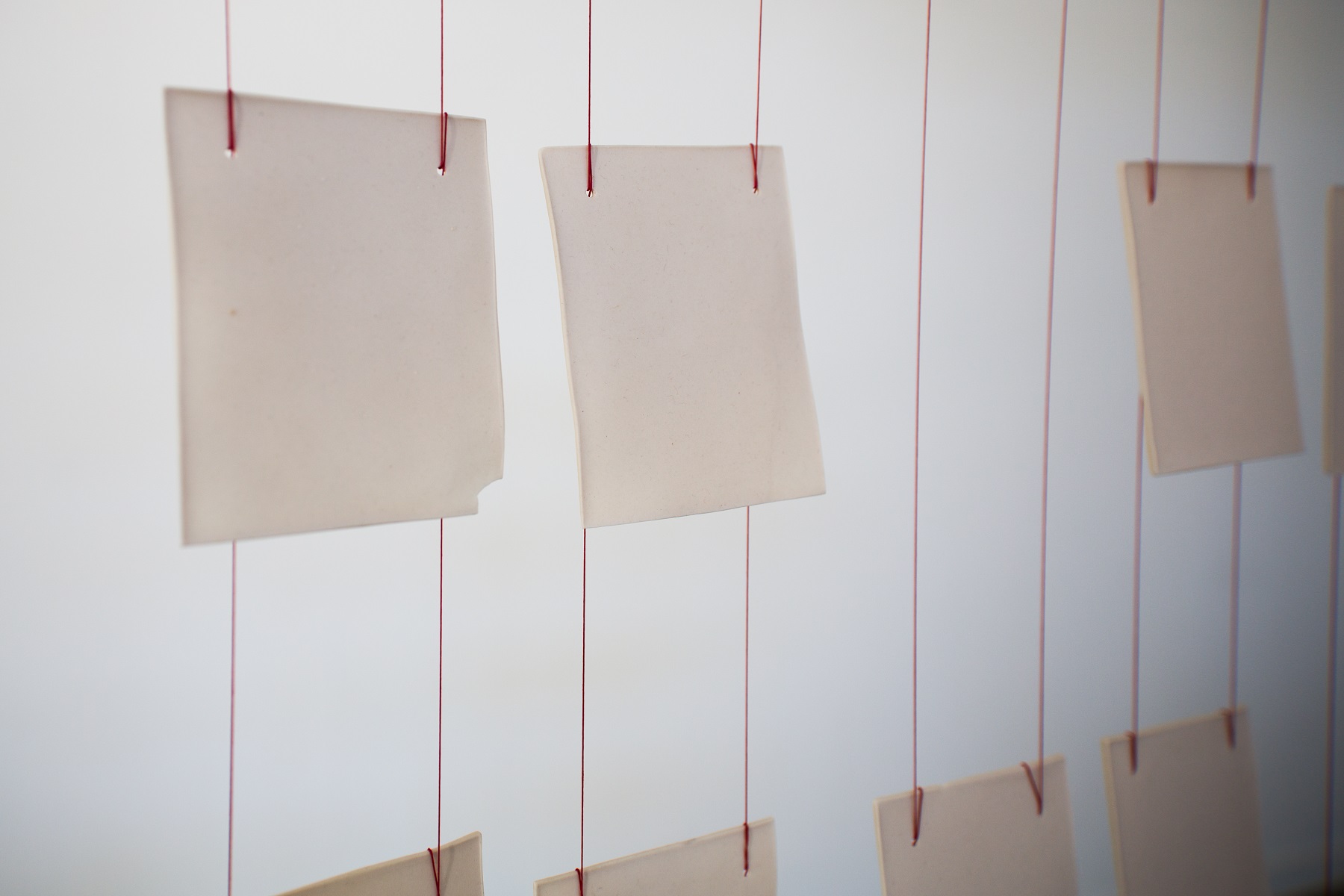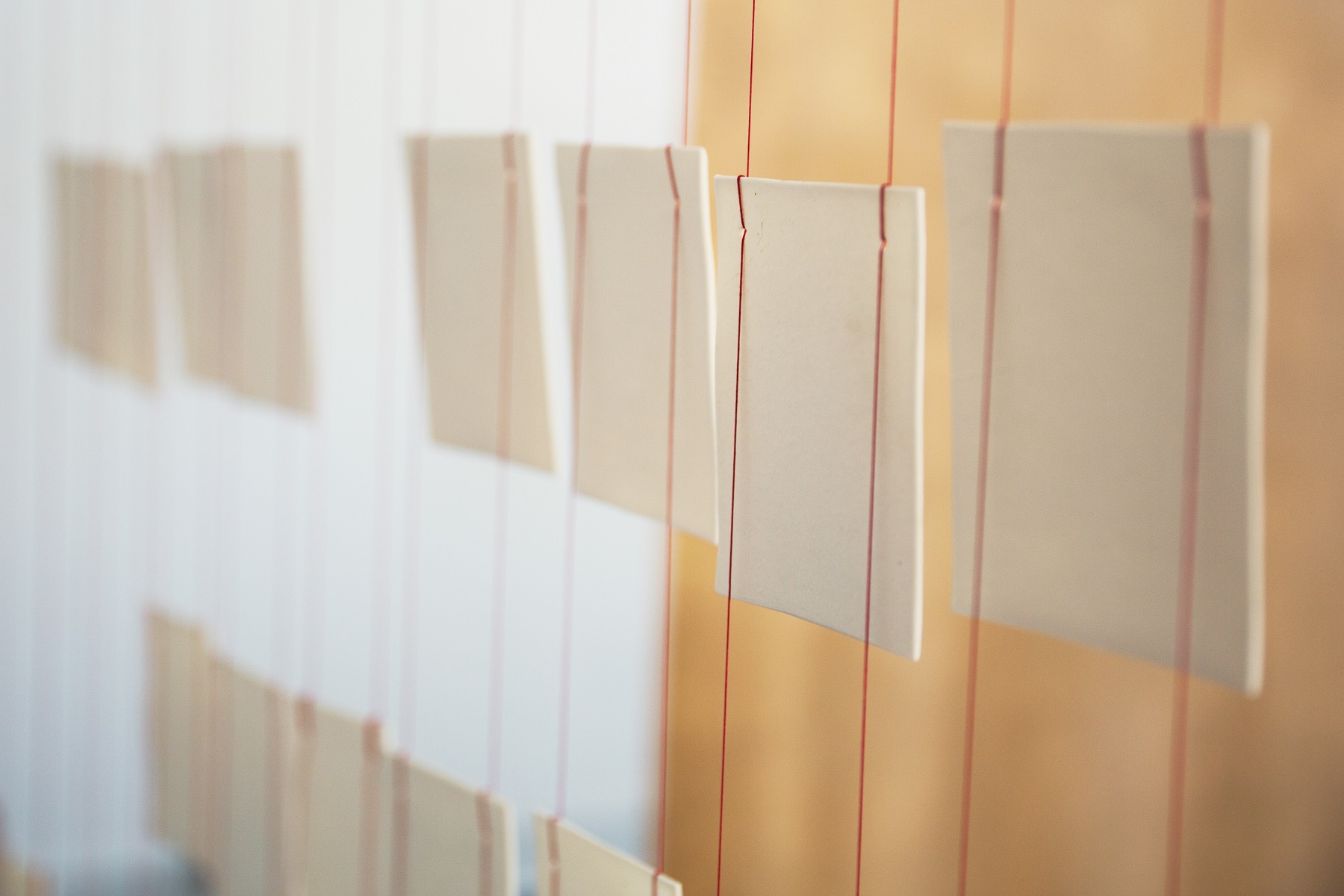If you cut me into two
This project investigates the threshold space that extends between an inside and an outside perspective when one’s existence is built through and by multiple and even competing identities and understandings.
The installation consists of four dividers that together suggest a designated space within a room.

In architecture, the facade of a building is referred to as the “skin” of the building. This skin-like sheet is the mold of a section of a wall from the UC Berkeley Art Practice and Anthropology building where I received my MFA. The outside of the building is doubled as the inside of my mold. In which ways do the institutions we belong to shape and mold us?

Evoking meat-packing, temperature-controlled doorways, this piece, hung in the center of the space offers a transparent and permeable structure. On the vinyl strips is a steel-stamp imprint of a list of languages, taken from the US’s Military Accessions Vital to National Interest (MAVNI) recruitment program information sheet. Eligible are individuals who don’t yet have a regulated status in the US but speak (and know the respective culture) one out of a list of fifty languages. If accepted to the program one can receive citizenship within several weeks. All the fifty languages on the list are written in English. In other words, it is a list of exonyms: a name for a people or a language which is not used by the people themselves; the gaze that renders one as an “other”. I was interested in considering what anxieties and also weaknesses this list points to. Being courted and invited to be part of the “us” (of the US) because one is part of the “them” – has intimate knowledge of that culture – creates an entanglement that no longer abides by such distinctions.

Projected images on the latex surface: Arabic calligraphy in the Chinese tradition as taught by artist Haji Noor Deen in a workshop at the Center of Middle Eastern Studies, UCB.

These fifty translucent tiles, each standing in for one letter, strung together function as a code or a reductive encrypting for the installation’s title: If You Cut / Me Into Two / My Inside / Will Pour / Outside / Wont Yours?
The number fifty correlates to the list of languages steel-stamped on Untitled#2.






